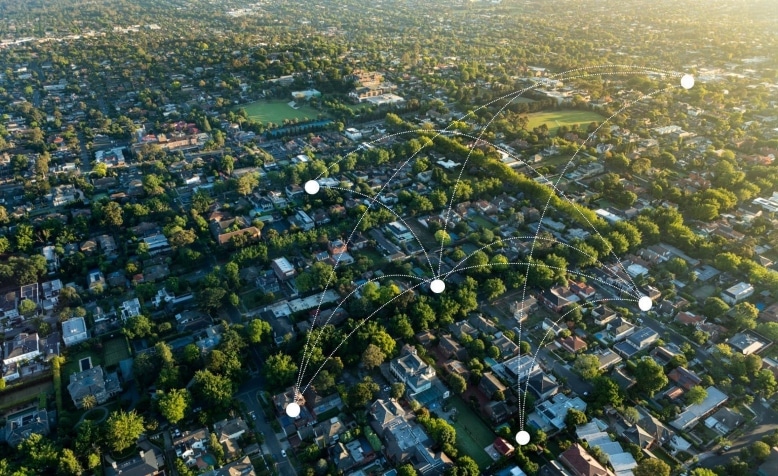Broadband Office Name: South Dakota Governor’s Office of Economic Development
BEAD Award Amount: $207.2 M
South Dakota Broadband Director: Mike Waldner
South Dakota BEAD Program Tracker
| State | IP Vol 1 Approval | IP Vol 2 Approval | Challenge Process Submission Closed | Submitted Challenge Results to NTIA | Challenge Process Results Approved by NTIA | 1-Year Subgrantee Selection Process |
|---|---|---|---|---|---|---|
| South Dakota | Yes | No | Yes | N/A | N/A | N/A |
South Dakota BEAD Program Information

Key Updates
South Dakota has received approval for their Initial Proposal Volume 1 and is currently awaiting NTIA approval for their Initial Proposal Volume 2.
The state closed its State BEAD Challenge Process Submission portal on June 14, 2024.
South Dakota BEAD Program Plans & Maps
South Dakota BEAD Program Initial Proposal Volume 2: Overview
*Information is subject to change. South Dakota is awaiting official approval of Initial Proposal Volume 2 from the NTIA.
BEAD Long-Term Objectives
The Broadband Team has outlined the following goals and objectives for the BEAD program:
Objective 1: Provide Broadband Access by 2027
- Ensure rural and urban residents, agricultural and commercial businesses, and community anchor institutions have the means to access broadband by 2027.
Objective 2: Economic Enhancement
- Support economic growth, job creation, and workforce development through expanded broadband access and adoption.
Objective 3: Digital Citizenship
- Expand opportunities for South Dakotans to engage in competent civic activities and exercise their digital citizenship.
Objective 4: Longevity
- Ensure that broadband access is sustained and continues beyond 2028, providing long-term benefits to the community.
South Dakota BEAD Program Project Area Design
In South Dakota, project areas for the BEAD program are being designed with flexibility in mind. Applicants have the ability to choose their own areas for broadband deployment. This approach allows applicants to tailor their proposals to specific needs and conditions of different regions, ensuring more effective and targeted broadband expansion across the state.
South Dakota BEAD Program Extremely High Cost Threshold
The Broadband Team in South Dakota will evaluate the Extremely High Cost Per Location Threshold (EHC) on a case-by-case basis as applications are submitted. This approach allows the team to identify instances where BEAD funding may be allocated to Other Last-Mile Projects. By assessing each application individually, the team can ensure that funding is directed towards the most cost-effective and impactful projects, addressing high-cost areas effectively.
BEAD Deployment Subgrantee Selection
South Dakota is asking for the following preregistration evidence from subgrantees and compliance with: Financial capability, managerial capability, operational capability, technical capability, ownership info, public funding info, compliance with laws, cybersecurity/supply chain compliance, and BABA/EHP/NEPA/NHPA compliance.
Primary Scoring Criteria for Priority Broadband Projects
- 120 pts – Minimal BEAD Outlay
- 25 pts – Affordability
- 25 pts – Fair Labor Practices
Secondary Scoring Criteria
- 20 pts – Speed to Deployment
- 10 pts – Local and Tribal Coordination
Secondary Scoring Criteria for Other Last-Mile Projects
*Minimal BEAD Outlay is 100 pts
- 20 pts – Speed to Deployment
- 10 pts – Local and Tribal Coordination
- 20 pts – Speed of Network and Technical Capabilities
BEAD Non-Deployment Subgrantee Selection
South Dakota does not intend to provide subgrants for any non-deployment purposes. The focus of the BEAD program in the state will be solely on broadband deployment activities to expand and enhance broadband access across South Dakota.
BEAD Eligible Entity Implementation
The Broadband Team in South Dakota intends to implement the following activities as part of the BEAD program:
- Challenge Process Implementation:
- Conduct and manage the process for addressing and resolving challenges related to broadband deployment.
- Stakeholder Engagement:
- Maintain continuous engagement with stakeholders throughout the BEAD program period to gather input, provide updates, and foster collaboration.
- Subgrantee Selection Process:
- Develop and manage the process for selecting subgrantees to ensure effective and equitable allocation of BEAD funds.
- Grant Award and Management Process:
- Oversee the awarding of grants and manage the administrative aspects of grant agreements.
- Ongoing Subgrant Monitoring Activities:
- Conduct regular monitoring of subgrantee activities to ensure compliance with program requirements and effective use of funds.
- Data Collection and Mapping:
- Perform ongoing data collection and mapping to track broadband deployment progress and identify areas needing attention throughout the BEAD program period.
- Administrative, Oversight, and Implementation Functions:
- Manage any other administrative, oversight, and implementation functions necessary for the effective management of BEAD subgrants.
BEAD Local, Tribe, and Regional Broadband Planning Process
Feedback Mechanisms:
- Email Communication: Any stakeholder can share feedback with the Broadband Team through the team’s email inbox.
- Reporting Portal: South Dakota will continue to maintain and monitor the portal where residents can report poor internet or lack of internet altogether.
Engagement Activities:
- South Dakota Broadband Summit: Hosted the first-ever South Dakota Broadband Summit in 2023 to gather input and share information.
- Social Media: Promoted broadband initiatives and updates through various social media platforms.
- Web Page: Developed a dedicated web page to provide information and updates about the BEAD program and broadband efforts.
- Press Releases: Issued press releases to inform the public and stakeholders about key developments and opportunities.
- Meetings:
- Conducted 1-on-1 meetings with stakeholders to gather detailed input and address specific concerns.
- Held group meetings to facilitate broader discussions and collaboration among stakeholders.
BEAD Labor Standards & Protection
South Dakota requires all BEAD subgrantees to submit the following information:
A record of past compliance with federal/employment laws:
- Must address info on deployment projects within the last 3 years.
- Certification form from an Officer/Director level employee of past compliance.
- Written confirmation that subgrantee has disclosed any violations from contractors within the last 3 years.
- Discussion of workforce plan
Plans for ensuring compliance with federal/employment laws:
- How subgrantee will ensure compliance in its labor/employment practices.
- Info on applicable wage scales, wage, and overtime practices for each class of employee expected to be involved in physical construction of the network.
- How subgrantee will ensure implementation of workplace safety committees.
- Comply with the Prevailing Wages Act.
- Other items as outlined in the BEAD NOFO.
BEAD Minority Business Enterprises / Women’s Business Enterprises / Labor Surplus Area Firms Inclusion
South Dakota does not currently have a formal Minority and Women’s Business Enterprises (MWBE) program. However, the Broadband Team plans to keep track of information provided by applicants regarding MWBE contractors and subcontractors. Here are the steps they are taking to support these businesses:
- Adding qualified small and minority businesses, as well as women’s business enterprises, to solicitation lists.
- Ensuring these businesses are considered whenever they could be potential sources.
- Breaking down total requirements into smaller tasks or quantities when economically feasible to allow for maximum participation by these businesses.
- Setting delivery schedules that encourage participation from small and minority businesses, and women’s business enterprises, whenever possible.
- Utilizing the services and assistance of organizations such as the Small Business Administration and the Minority Business Development Agency of the Department of Commerce.
- Requiring subgrantees to follow these same steps for subcontractors.
BEAD Cost & Barrier Reduction
1. Promoting the use of existing infrastructure.
2. Promoting and adapting dig-once policies.
3. Streamlining permitting processes.
4. Streamlining cost-effective access to poles, conduits, and easements.
5. Streamlining rights of way, including the imposition of reasonable access requirements.
BEAD Low-Cost Broadband Service Option
The following low-cost option is based on the BEAD NOFO guidelines:
- Monthly costs must not exceed the provider’s existing lowest-cost plan.
- Users can apply the Affordable Connectivity Program subsidy.
- Offers speeds of 100/20 Mbps.
- Ensures typical latency measurements are no more than 100 milliseconds.
- Free from data caps, surcharges, or usage-based throttling.
- Allows for upgrades if the provider later offers a low-cost plan with higher speeds.
BEAD Middle-Class Affordability
South Dakota plans to implement the following strategies:
Coordination with State Broadband Providers:
- Collaborating with key industry associations such as the South Dakota Telecommunications Association (SDTA) and SDN Communications.
Emphasizing Affordability Scoring Criteria
Low-Cost Service Option:
- Ensuring providers receiving BEAD subgrants offer affordable broadband services to middle-class families.
